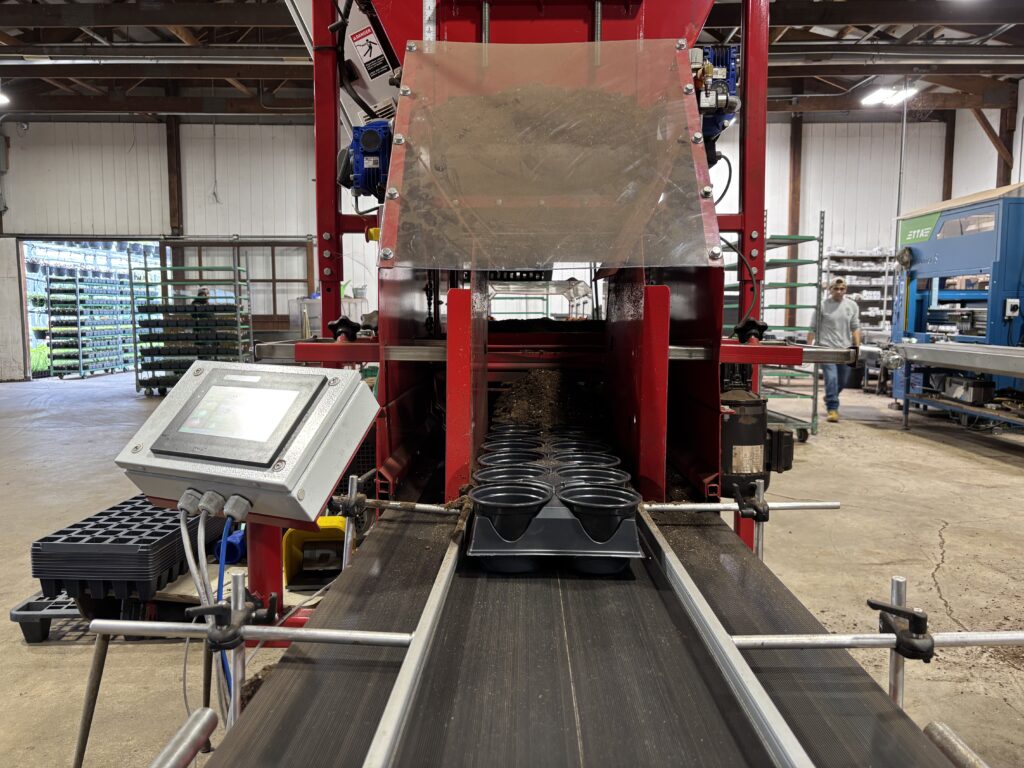Six Misconceptions that Can Jeopardize Nutrient Management
by Brian Cantin, Grower advisor
As with many greenhouse practices, nutrient management is not just about choosing the right fertilizer: it’s about reviewing all the practices that may directly or indirectly affect nutrient management.
A thorough understanding of irrigation practices, fertilization programs and root medium selection is a prerequisite for designing a successful nutrient management program. Overwatering, underwatering and excessive leaching will affect both the reserves of elements in the media and the ability of the roots to take up nutrients. The selection of media and its ability to hold on to nutrients between irrigations will affect the day-to-day availability of nutrients. Before switching to a new growing media, it is thus critical to compare its physical and chemical properties to those of the previous mix. Water quality is another parameter that cannot be overlooked when assessing a nutrient management program. If your water source is a well or a pond, testing water quality several times a year is warranted, so you can adjust for changing conditions caused by seasonal runoff. By focusing on the whole picture, it becomes easier to understand that as crops, growing systems and management practices change, one must be ready to change fertilizer practices as well. Keeping this in mind, let’s now move on to some specific misconceptions that need clarification.
Misconception no1
Water pH Affects mMedia pH in Peat-Based Media
In reality, the main factors that affect media pH are water alkalinity, lime added to the media, acidity or basicity of fertilizers, and the response of the roots to uptake of hydrogen and hydroxyl ions. Alkalinity is a measure of the capacity of the water to resist changes in pH, whereas the pH of the water is simply a measure of the acidity or basicity of the irrigation water. It is thus the alkalinity – not the pH – of the water that exerts the greatest effect on growing medium fertility and plant nutrition.

Misconception no2
All Forms of Nitrogen Are the Same
Plants actually absorb nitrogen in two forms. One form is ammoniacal-N, which can be either ammonium (NH4⁺) or urea (CO(NH2)²⁺. The other form is nitrate-N (NO3ˉ). The form of nitrogen used as fertilizer can contribute to an upward or downward drift in the pH of the media over time.
Misconception no3
Ammoniacal Nitrogen Causes Stretch
Research has shown that ammoniacal-N does not cause plant stretch. Repeated test results indicate that the amount of stretch is highly correlated with the amount of phosphorus supplied to the plants, not the form of nitrogen. Fertilizers high in nitrate-N typically contain little or no phosphorus, which led many to the false assumption that supplying nitrogen as nitrate resulted in compact plants. On the other hand, fertilizers high in ammoniacal-N typically contain high levels of phosphate, leading to the equally false assumption that NH4⁺ causes stretch. In reality, low phosphate levels result in compact plants and high phosphate levels can contribute to stretch. It is important to reduce phosphorus without totally restricting it, as it is essential for cell division and new tissue development as well as for key plant functions such as photosynthesis. Soilless substrates have a very limited holding capacity for phosphorus. Aim for between 5 to 10 ppm of phosphorus in a saturated media extract to ensure sufficient levels of phosphorus in your finished container plantings. Plug growers who germinate seed will often request germination mixes with no phosphorus so as to keep the seedlings compact.
Misconception no4
Phosphorus Does Not Leach from Soilless Mixes
This is a misconception based on the fact that phosphorus does not readily leach from mineral soils. Field soils contain significant amounts of clay, which will bind the phosphorus. Soilless media based on peat and bark are organic and thus lack the ability to retain sufficient amount of phosphorus.
Misconception no5
Iron Deficiency Is Due Exclusively to High pH
The lack of solubility of iron in media with high pH levels is not the only cause of chlorosis of the upper leaves. Several other conditions can produce false symptoms of iron deficiency. Antagonism by other nutrients – such as high concentrations of phosphorus or manganese – can tie up phosphorus and contribute to upper leaf chlorosis. Wet conditions in poorly drained media can create an oxygen deficiency leading to induced chlorosis with symptoms that mimic iron deficiency. Last but not least, the symptoms caused by root loss due to high salts and or disease can also be misleading.
Misconception no6
The Mobility of Calcium Is Similar to that of Other Elements
Unlike other elements, calcium is not easily transported to the young growing points of plants or to developing fruits. Bract edge burn on poinsettia and blossom end rot in tomatoes are two good examples of lack of calcium. Calcium’s mobility through the plant increases as the movement of water through the plant is increased via transpiration, that is, by water loss through the leaves drawing water upward through the plant. Cool, overcast conditions as well as high humidity can reduce the rate of transpiration and thus jeopardize calcium uptake. In addition, calcium uptake can by antagonized by other elements such as potassium, sodium and magnesium.
Clearly, effective nutrient management involves more than just fertilizers! It requires an understanding of the interactions between the media, soil solution and greenhouse environment and their combined effects on nutrient uptake and availability.

